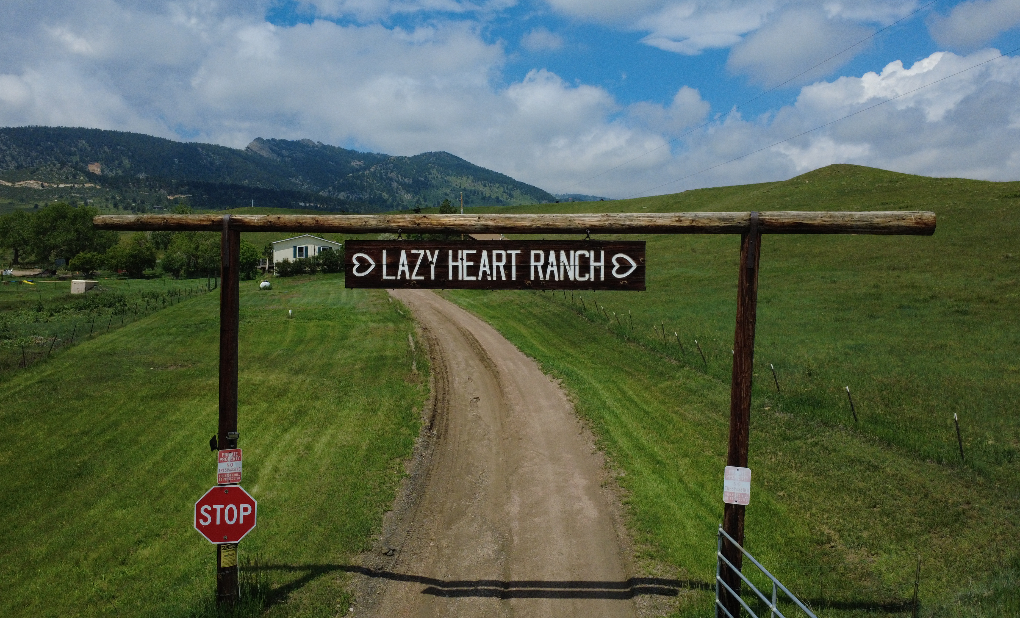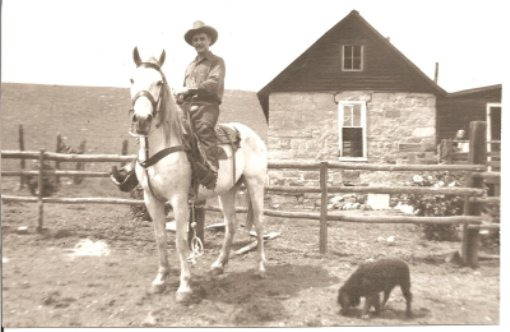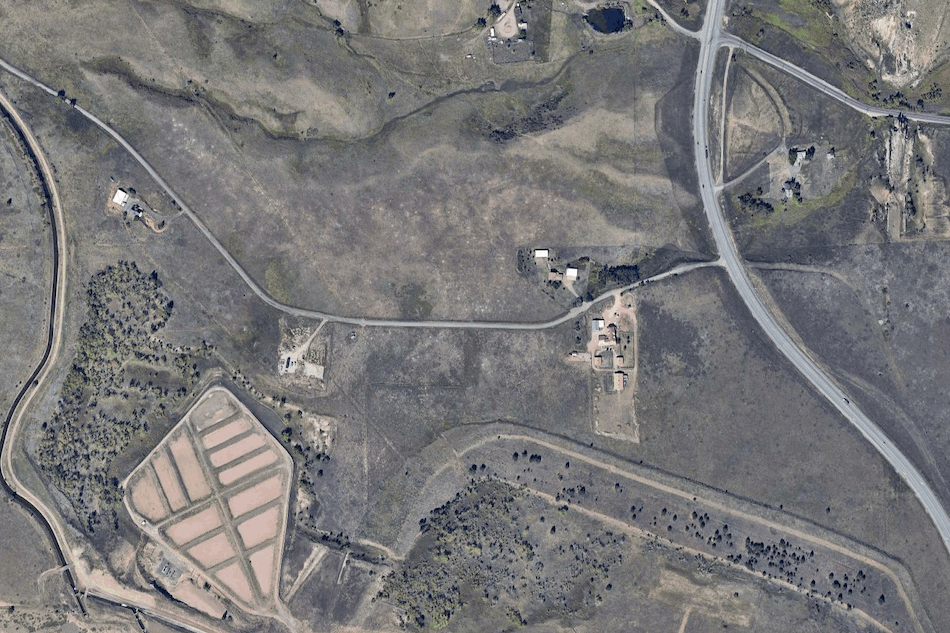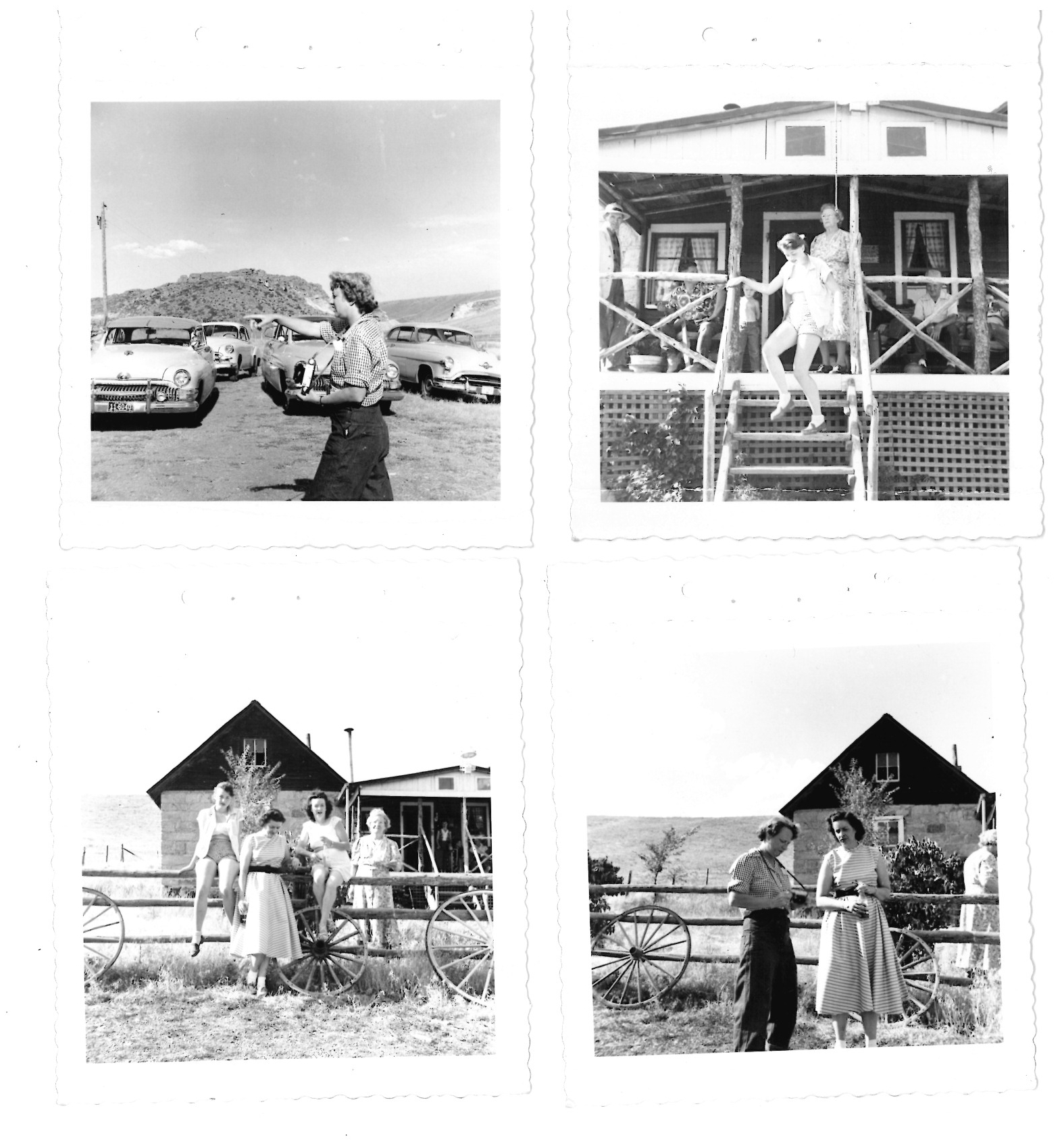
Courtesy of Steve Johanssen

Audio By Carbonatix
Denver Water has purchased 230 acres in Jefferson County, a property off Indian Head Road known as the Lazy Heart Ranch, for $5.6 million.
According to Denver Water, the newly acquired land is “strategically located” next to the Ralston Reservoir and the South Boulder Diversion Canal. By purchasing the property, Denver Water can “protect the canal from being surrounded by future private development and eliminate or defer the costs” related to enclosing the canal. But for Steve Johanssen, acting owner of the Lazy Heart Ranch, the land was part of his family, the last parcels of something that began over 150 years ago. Something that helped feed and build Denver in its infancy.
The Lazy Heart Ranch has been an operating ranch since the 1870s, according to Johanssen. Back then, the property was almost 1,250 acres, but it was owned by Henry and Almeda Wagner, who bought the land from the Colorado Central Railroad and a few neighbors. The Wagners raised beef and dairy cattle on their land, and would travel six and a half miles into Golden to sell butter and milk. Johanssen’s great-great-grandfather, William A. Johnson, purchased the ranch in 1908, after moving to Colorado from Ohio eight years earlier.
Johnson maintained cattle and agricultural interests, but wanted to use a heart-shaped cattle brand he had acquired before buying the ranch. After the literal rebrand, the Wagner Ranch was changed to the Lazy Heart Ranch, Johanssen says. And another business was soon added to the property.
This year, make your gift count –
Invest in local news that matters.
Our work is funded by readers like you who make voluntary gifts because they value our work and want to see it continue. Make a contribution today to help us reach our $50,000 goal!
The western portion of the Lazy Heart Ranch was rich with fire clay, a popular material for bricks. According to Johanssen, his great-great-grandfather started Johnson Fire Clay Mines in 1910, mining and shipping the raw material to Denver, where it was used to make the dark-red bricks you still see in parts of downtown today. That portion of the ranch property was sold to Denver Brick & Pipe Company in 1927, which eventually renamed itself Denver Brick; the company is still operating today under the ownership of Acme Brick.

Courtesy of Steve Johanssen
“Our family goes back to 1900 out here. My great-great-grandfather, he was a bit of an entrepreneur,” Johanssen says. “They’d mine a bunch of clay, put it in the railroad, and send it to downtown Denver, where it was turned into bricks. A lot of downtown Denver was built with those bricks.”
Mining on Lazy Heart Ranch ended in the 1940s, but you can still see scars from the digging on the Hogback when driving along Highway 72 from Golden to Coal Creek Canyon, Johanssen says.
A fifth-generation Coloradan, Johanssen has a deep knowledge of the historic ranch and the surrounding land, most of it handed down by his family. However, much of the acreage had been sold away in pieces by the time he was an adult. His stepfather passed away in 2018, and his mother began requiring nursing home assistance earlier this year. With his daughter, niece and nephew gravitating away from ranching and the agricultural trade, it was time to let go.
“I think it was inevitable at some point. It’s been passed down in my family from one generation to the next. The generation below me, they have no interest in living here and continuing it. They’ve gone on in their own lives and don’t have much interest in ranching,” he says.
Johanssen says he was looking at a $12,000 monthly bill for his mother’s medical and residential needs, and his family was already familiar with Denver Water thanks to an old easement agreement accommodating the South Boulder Diversion Canal and then Ralston Dam and Ralston Reservoir’s construction.

Google Maps
“Our relationship with Denver Water goes back to 1936. They needed a way to get the water coming through the Moffat Tunnel into the east side of the Continental Divide,” he says. “Denver Water put a canal in that pretty much split the ranch in half. Then they bought land to the south of the dam, and used a lot of it to build Ralston Reservoir. …They owned all the land to the north of us, all the land to the east of us and all the land to the south of us.” Denver Water’s new $520-million Northwater Treatment Plant and part of an 8.5-mile water pipeline are located just south of the Ralston Reservoir and Lazy Heart Ranch.
A residential home builder made a “very generous offer” for the land, but Johanssen says his family wasn’t in a position to wait months and years for zoning and development requirements to be met, and the “clock was kind of ticking.”
“I just couldn’t see a two-and-a-half-year development plan and 200 homes going in there. They would have had to add more entrances off Highway 93, so CDOT would’ve been involved, and the City of Arvada, and Jefferson County. It just would have taken a lot,” he explains. “We definitely got less money for it, but it will stay open space, just like all the rest of the open space [Denver Water] has. Denver Water owns thousands of acres in Colorado, and it’s mostly vacant land. They lease a lot of it back to cattle ranchers, so this kind of naturally fits into what they’re doing.”
Denver Water is one of the biggest landowners in Colorado. According to the agency, it owns about 2 percent of the 2.5 million acres of land where its collection lines run. However, other than stating it wants to keep its new land in Jeffco away from developers, Denver Water has been tight-lipped about any future plans for the Lazy Heart Ranch site since the Board of Water Commissioners approved the $5.6 million purchase on September 24. The state’s oldest and largest water utility has proven to be a shrewd operator with land deals, including a recent land swap with Denver Broncos ownership in exchange for Denver Water properties in Burnham Yard, where the team plans to build a new stadium.
Johanssen could see the Lazy Heart Ranch being cleared out, and the property turned into a water reservoir; he says that Denver Water approached his family in the ’90s to buy the Lazy Heart Ranch as a potential site for water storage as the city’s population grew and much of Colorado was in a drought. The City of Arvada eventually agreed to store water in old natural gas mines in 2003, and the proposal dried up, he adds.
“It might be ten, fifteen years before they go back to the plan for the reservoir. But there were soil tests, engineer drawings…it was definitely something that was going to happen back then,” Johanssen says. “I would think that they would get a lot less pushback in putting a reservoir here someday, but I know there’s going to be opposition no matter what you do.”
According to Johanssen, the property still has a couple of homes, horse stables and agricultural buildings and structures. He doesn’t know what Denver Water’s plans are for those, but says he wouldn’t be surprised if the Lazy Heart Ranch is “rented out or used for employees.”
“It’s a tough decision. You feel bad about letting something go that’s been in the family so many years,” Johanssen says. “But progress is progress.”
See more old photos of the ranch from Johanssen’s collection below.

Courtesy of Steve Johanssen

Courtesy of Steve Johanssen